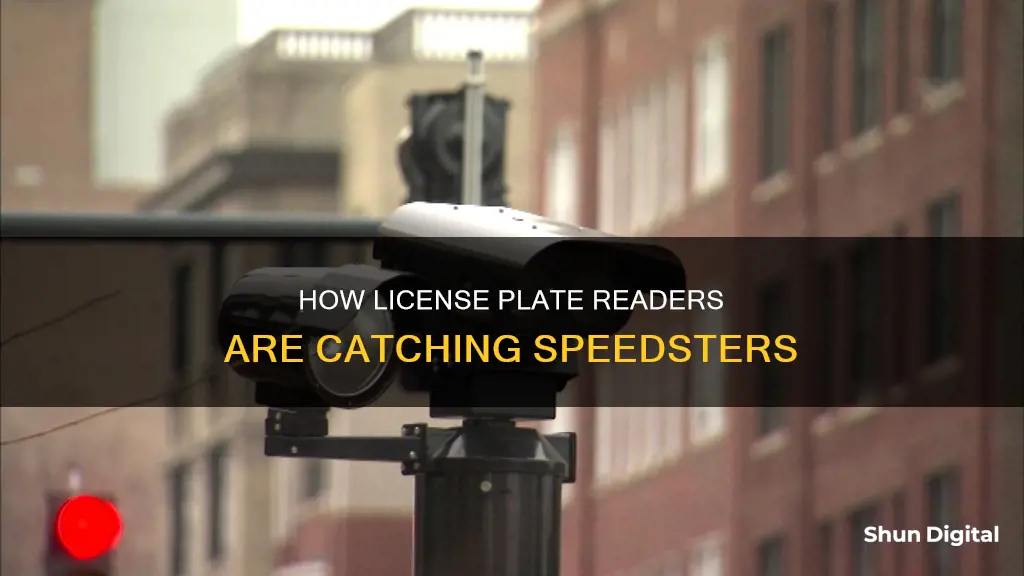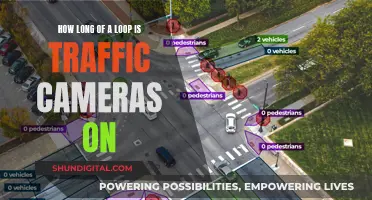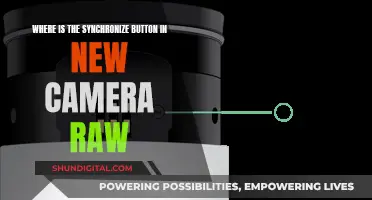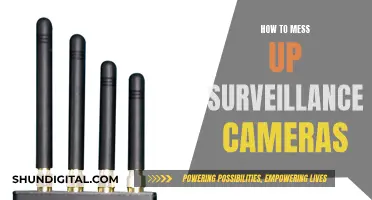
License Plate Recognition (LPR) cameras are advanced devices that can automatically capture and record license plate numbers, vehicle location, and other data such as images, geolocation, and timestamps. This technology is used in various settings, including law enforcement, asset recovery, and parking management, and has multiple acronyms, including ALPR, ANPR, and LPC. While LPR cameras have been shown to be effective in capturing license plate data, there are concerns about data privacy and potential misuse, especially with the ability to track and record the movements of millions of people.
| Characteristics | Values |
|---|---|
| Names | License Plate Recognition (LPR), Automatic Number Plate Recognition (ANPR), Automated License Plate Readers (ALPR), Number Plate Recognition (NPR) |
| Function | Captures and records license plate and vehicle location information |
| Image Capture | Takes multiple photos of a vehicle as it comes into view |
| Image Analysis | Employs Optical Character Recognition (OCR) software to extract readable text from images |
| Alert System | Can generate alerts or trigger actions based on license plate data, e.g., stolen vehicle detection |
| Image Interpretation | Interprets images that may be unclear to the human eye, aiding in precise vehicle identification |
| Applications | Recovery, investigations, fraud prevention, commercial marketing, traffic control, access control, toll collection, parking management, auto recall, insurance fraud detection |
| Data Collection | Collects license plate numbers, images, geolocation, timestamps, vehicle make and model, driver and passenger information |
| Data Sharing | Law enforcement agencies can share data with other agencies |
| Data Retention | Data is typically stored for extended periods, from days to several years, and may be retained indefinitely |
| Privacy Concerns | Can potentially invade privacy and violate rights of communities; data misuse and breach risks |
What You'll Learn

License plate recognition systems are used for parking enforcement
License plate recognition (LPR) systems are an effective tool for parking enforcement, offering a range of benefits to both parkers and car park operators. LPR technology uses image-processing to identify vehicles by their license plates, enhancing safety and improving the parking experience.
One of the key advantages of LPR in parking enforcement is its ability to prevent fraud and ensure a secure parking environment. The license plate serves as a virtual ticket, granting access and deterring stolen cars or ticket swapping. The system matches the license plate with the ticket at entry and exit, making fraudulent activities almost impossible. Additionally, LPR enables effective management of blacklists, providing control over all events and movements at the entrance and exit of the parking facility.
LPR technology also offers convenience and ease of use. Recurrent users can access and exit the car park smoothly without the need for physical tickets or permits, as their license plate serves as a form of identification. This feature is especially useful for contract parking, streamlining the parking process for both parkers and parking operators.
Furthermore, LPR systems provide flexibility and integration options. They can be integrated with pre-paid ticketing systems, cashless payment solutions, and even allow for the booking of parking spaces in advance, ensuring a hassle-free experience for drivers. LPR technology can also be retrofitted to existing parking solutions, making it a versatile tool for parking enforcement and management.
Another benefit of LPR in parking enforcement is its reliability. In cases where tickets are lost or misplaced, the system can easily determine the actual entry time based on the license plate number, reducing confusion and providing accurate records for parking management.
LPR technology has revolutionized parking enforcement, offering enhanced security, convenience, and flexibility. By utilizing license plate recognition, parking facilities can improve efficiency, deter fraud, and provide a seamless experience for parkers, making it a valuable tool in the parking industry.
Activating Kingdom Hearts 3's Camera Mode: A Quick Guide
You may want to see also

ALPRs are used to monitor and control traffic
Automated License Plate Recognition (ALPR) is a valuable tool for monitoring and controlling traffic. ALPR systems use optical character recognition to read vehicle license plates, and can be either mobile or fixed. Mobile ALPR systems are vehicle-mounted and used primarily by law enforcement, while fixed ALPR cameras are mounted on traffic poles and used for law enforcement and asset recovery.
ALPR technology has a wide range of applications in traffic monitoring and control. One of its primary uses is in electronic toll collection on pay-per-use roads. ALPR cameras capture license plate information, allowing drivers to be billed later for using toll roads. This eliminates the need for toll booths and provides a more efficient and convenient way to collect tolls.
ALPR is also used to monitor and control traffic by capturing and storing license plate data, including the location, date, and time of each scan. This data can be used to identify vehicles involved in traffic violations, such as speeding or running red lights. Law enforcement agencies can use ALPR to identify vehicles with expired license plates or those that are wanted in connection with crimes. The data can also be analysed to determine peak traffic hours and divert traffic to less congested routes, reducing traffic congestion and improving traffic flow.
In addition, ALPR technology aids in asset recovery, particularly in locating stolen vehicles. By capturing and storing license plate data, law enforcement agencies can quickly identify and locate stolen vehicles, increasing the chances of recovery.
While ALPR offers significant benefits in traffic monitoring and control, it has also raised concerns about privacy and civil liberties. The vast amount of data collected by ALPR systems can reveal intimate details about individuals' lives and track their movements. As a result, there have been calls for regulations and policies to address these concerns and ensure that ALPR technology is used responsibly and ethically.
Using Camera and Wi-Fi: How Much Battery Drain?
You may want to see also

ALPRs are used to identify and track stolen vehicles
Automated license plate readers (ALPRs) are used to identify and track stolen vehicles. ALPRs are high-speed, computer-controlled camera systems that are typically mounted on street poles, streetlights, highway overpasses, mobile trailers, or attached to police squad cars. They automatically capture all license plate numbers that come into view, along with the location, date, and time. This data is then uploaded to a central server, where it can be accessed by law enforcement agencies to track and recover stolen vehicles.
ALPR technology can read up to 900 plates per minute, per plate reader, helping police officers quickly identify suspect vehicles. The systems can be pre-loaded with lists of license plates that are actively being sought, such as stolen vehicles, and will alert officers when a match is found. This enables law enforcement to act quickly and efficiently in recovering stolen vehicles and bringing criminals to justice.
In addition to fixed ALPR cameras, mobile ALPRs attached to police patrol cars allow officers to capture data from license plates as they drive around during their shifts. This enables them to cover a larger area and increase the chances of locating stolen vehicles. The data collected by ALPRs can also be used to identify travel patterns and associate vehicles with each other, aiding in the investigation of crimes beyond just stolen vehicles.
The use of ALPR technology has raised concerns about privacy and the potential for misuse. While it is a valuable tool for law enforcement, there are worries that it could be used to invade the privacy of individuals and target certain communities. There have been instances of ALPR data being misused or abused by law enforcement officers, leading to wrongful stops and searches. As a result, there are ongoing debates and legal efforts to balance the benefits of ALPR technology with the need to protect civil liberties.
Transitioning from Camera Raw to Lightroom: A Guide
You may want to see also

ALPRs are used to identify and apprehend dangerous criminals
Automated license plate readers (ALPRs) are an invaluable tool for law enforcement agencies in identifying and apprehending dangerous criminals. With the ability to scan and read up to 900 license plates per minute, ALPRs provide police officers with real-time data and alerts, enabling them to quickly locate and intercept vehicles of interest. This technology is especially useful in identifying and locating stolen vehicles, which account for a significant proportion of crimes in the United States.
ALPRs can be mounted on police cars or placed in fixed locations, such as on traffic poles or buildings. When a license plate is scanned, the system checks it against hotlists of vehicles of interest, such as those associated with criminal activities, Amber Alerts, or missing persons cases. If a match is found, officers receive immediate alerts, allowing them to take prompt action. This capability enhances the efficiency of law enforcement, as they can respond more quickly to potential threats and increase arrest rates.
The data collected by ALPRs includes license plate numbers, date and time stamps, GPS coordinates, and contextual photos of the vehicle and its surroundings. This information can be invaluable in placing a suspect at a crime scene, aiding in witness identification, and tracking the movements of individuals. The ability to analyze and identify patterns in vehicle movements can also help law enforcement gain insights into criminal networks and detect unusual or suspicious behavior.
In addition to locating stolen vehicles and identifying vehicles linked to criminal activities, ALPRs have been used to address various other public safety challenges. For example, they have been effective in tackling drug-related activities, tracking gang-related crimes, and enhancing campus security at schools and colleges. ALPRs have also been instrumental in finding missing persons, with the ability to generate comprehensive lists of possible plate numbers based on partial plate information, making them a valuable tool in Amber Alert and Silver Alert cases.
While ALPRs have raised concerns about privacy and civil liberties, they have proven to be a valuable tool in crime prevention, investigation, and deterrence. The data collected is anonymous, containing no personally identifiable information (PII) on the vehicle's occupants or owner. Additionally, regulations and policies restrict ALPR access to authorized and trained law enforcement personnel, with audit trails in place to ensure accountability and justify data access.
Exploring Camera Raw Files: A Quick Preview Guide
You may want to see also

ALPRs are used for toll enforcement
Automated license plate readers (ALPRs) are used for toll enforcement on roads that are not staffed by people. ALPRs are camera systems that can be mounted on street poles, streetlights, highway overpasses, mobile trailers, or attached to police cars. They automatically capture all license plate numbers that come into view, along with the location, date, and time. This data is then uploaded to a central server.
For toll enforcement, ALPRs capture a photograph of the license plate of a vehicle that passes through a toll booth without paying. This data is then used to mail a bill to the owner of the vehicle for payment. ALPRs provide a more efficient and accurate way of enforcing tolls compared to manual methods.
In addition to toll enforcement, ALPRs are also used for law enforcement and asset recovery. They can aid in locating missing children or adults through Amber or Silver alerts, tracking down stolen vehicles, and identifying people wanted for investigation of serious crimes. ALPRs can also be used for parking enforcement and revenue collection from individuals who are delinquent on taxes or fines.
While ALPRs offer several benefits, there are also concerns about privacy and the potential for misuse. The data collected by ALPRs can reveal detailed information about a person's life, including their travel patterns and locations visited. Unregulated use of ALPRs can lead to issues such as incorrect vehicle stops and worsening racial and socioeconomic disparities.
Understanding RAW Camera Files: Unlocking Photography's Potential
You may want to see also
Frequently asked questions
A license plate reader (LPR) camera is an advanced device that automatically captures and records license plate information, including the number, images, geolocation, and timestamps.
LPR cameras use optical character recognition (OCR) software to extract readable text from images, enabling the accurate identification of license plates. This technology can interpret unclear images and is crucial for precise vehicle identification.
LPR cameras are strategically positioned in various locations, such as parking lots, highways, toll booths, and other public spaces, to gather vehicle data for applications in collections, recovery, investigations, and commercial marketing.
LPR cameras themselves do not issue tickets, but the data they collect can be used for traffic enforcement and monitoring. This includes toll collection, red-light enforcement, and speed limit monitoring, which can lead to the issuance of tickets or fines.
Yes, the widespread use of LPR cameras has raised privacy concerns. While they aid in law enforcement and traffic management, these cameras collect data on millions of ordinary citizens, which can potentially invade privacy and be misused.







